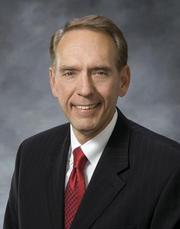 By Brice W. Harris, Chancellor, California Community Colleges
By Brice W. Harris, Chancellor, California Community Colleges
It is widely reported that Americans are saddled with $1.2 trillion in student loan debt, illustrating that a large number of students cannot afford to pursue higher education without taking on loans, even with the help of grants and scholarships. Ironically, these loans can wreck the financial lives of many, despite being intended to help them improve their lives.
Twenty-five percent of U.S. community college students, or about 2.1 million, are enrolled in a California community college. But only 4 percent of our students take out a federal student loan, and the vast majority repay them on time. That low percentage is likely because California community colleges charge the lowest tuition among the state’s three public higher education systems, at $46 per unit, which is also the nation’s lowest rate for community colleges.
Still, California community colleges are not absolved from taking action to foster financial well-being and responsibility among our students. We have developed online resources so they can make informed choices about the majors they choose and their financial aid options. Our “salary surfer” site lets students know what people with various majors earn annually and our icanaffordcollege.com site discusses various aid options.
We are launching a financial literacy campaign on our campuses and partnering with the National Endowment for Financial Education to design courses in which students must enroll to obtain federal loans. These courses will feature an online component, known as “CashCourse,” to give students access to financial information. Providing students with essential information on the terms of their loans is a critical way of ensuring that they will be responsibly used and ultimately repaid.
Many California community colleges are also moving to manage loans directly, rather than relying on third parties. This allows college staff to better monitor student loan activity and to work with students to prevent defaults. Staffers are also being trained to better understand and identify the sources of financial risk among borrowers.
Figures to be released this week by the U.S. Department of Education highlight some of the struggles colleges have had with students defaulting on federal loans. Schools with 30 percent or more of student borrowers who default on federal loans may no longer receive Pell grants or other federal student aid.
Unfortunately, 12 California community colleges have student default rates of 30 percent or more. But since so few of our students actually take out federal loans, a default rate of 30 percent usually means that only about 50 or so students out of tens of thousands are actually in default. Thankfully, these colleges are not at risk of losing federal financial aid since the number of students who take out loans at these schools is low in proportion to the total student body. My staff and I have been working with these colleges to lower their default rates and with some of the measures I have outlined above, hope to be successful in this effort.
Our students do not have to borrow excessive amounts to fund their educations. The vast majority repay their loans. Mounting student loan debt is a rising concern, but is not a major problem in California’s community college system. We intend to keep it that way.

